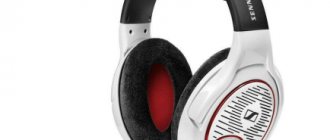Nothing personal, just marketing
Instead of an introduction
The truth is that the characteristics written on the box are largely a marketing ploy. This is possible due to the fact that there are no strict standards for measuring headphone parameters. Each manufacturer has its own measuring stands (precisely stands, some headphones of the same brand can be measured on one stand, others on another), and the characteristics can be given in different units of measurement.
That is, the same characteristics of Sony and Beats, for example, when compared on the same stand, will show results different from the numbers on the box.
Separately, I would like to note the characteristics of Chinese TWS headphones - cheap clones of AirPods (type i12). When choosing such headphones, you should not pay attention to the characteristics at all. After all, they are obviously fakes or almost fakes, sold only because of their appearance. The quality of the components (including the speakers) and the build in this case is so poor that it makes no sense to look at any specifications.
More or less decent Chinese TWS headphones and more interesting completely wireless models under $100 are collected in our special rating.
Of course, the universal principle “the more numbers, the better” still works, but with some reservations. Let's take a closer look at the main characteristics of the headphones. Let's not get into the nuances, there are very, very many of them. Let's try to arm ourselves with basic concepts that will really help in choosing headphones.
- TOP 10: Which headphones are better to buy
- TOP 15: Best headphones for music
Headphone power
The volume of the sound will depend on this indicator, but the choice here is rather based on the technology to which they are connected. When paying attention to this parameter, it is worth considering several points:
- what this characteristic defines;
- what is measured and what power is better to choose headphones.
So, the accessory has two powers: the maximum input power, which indicates that this device can be connected to equipment with the same performance, and the nominal one. It, on the contrary, indicates the size of the signal that the headphones need to reach their peak performance.
The power that the headphones are designed for varies from 1 mW to 5000 mW. If the main goal is to purchase an accessory for a smartphone or tablet, then you should not focus on power. It is enough to take into account the sensitivity parameters so that the music plays loudly without overloading the battery.
Frequency response of headphones
Frequency response of headphones - amplitude-frequency characteristic. It's not mentioned on the boxes, but it's worth starting with. To put it simply, this is a graph of volume versus frequency. The graph below shows which frequencies relate to bass, mids, and so on. And the green line at the top is the frequency response.
Actually, if you look closely at it, everything becomes clear. The horizontal axis is frequencies, the vertical axis is sound pressure, volume.
The frequency response shows the tonal balance of the headphones, whether they will be “dark” (with an emphasis on the low frequencies and lower mids, with a decline in the highs), “light” (on the contrary - high frequencies without a decline, rises in the upper mids), or even “bright” ( rise in the upper middle and maybe rise in the highs).
It is from the frequency response that the frequency response of the headphones is taken, by which they like to determine the quality of the headphones. The boundaries of the frequency range are the final declines in the frequency response on both sides.
Sennheiser HD 800s Frequency Response
If you don’t go into psychoacoustics (although for authenticity it would be necessary, because everyone’s perception of sound is different: for some the same headphones seem bright, and for others they seem quite pleasant, but this is a separate huge topic), then you can imagine the selection process headphones using the frequency response like this.
How to choose headphones based on frequency response characteristics
- Choose a certain range of headphones that are interesting to you (based on reviews, descriptions, budget, etc.), for example, from the best monitor models.
- Decide what sound you want to get, what handwriting you like best . Bass, for vocals, for classical and so on.
- And finally, look at the frequency response . You need bass - look for ones with a rise in the midbass and a late decline in the lower bass. You need headphones for vocals, look at the middle: so that there are no big ups and downs. If you like highs, look for a late decline at the highs and a more or less flat area in that range. And so on according to tastes.
Sennheiser HD 800s
It is worth noting two nuances:
- Sharp and narrow (along the horizontal axis) peaks may be a defect of the measuring stand ; they rarely mean real differences. This applies specifically to very narrow peaks and troughs.
- At the highest frequencies, the frequency response is always wavy . This is normal, it depends on the features of the stand. By and large, depending on the fit of the headphones, it changes in much the same way. The main thing is that there are no wide “hollows” or “hills”.
Meze 12 Classics. The frequency response graph is in the attached documentation
Where can you even find the frequency response of headphones if, as mentioned above, it is most often not on the box? Actually, sometimes there is. Sometimes it may be in the documentation inside the box. Or on the manufacturer's website. But often (especially for non-audiophile models) the manufacturer does not share the frequency response.
But many resources involved in tests and reviews of headphones have their own measuring stands and post the frequency response for tested models. In our ratings and reviews you can also find the frequency response for the headphones you are interested in. We've scoured the Internet for you.











